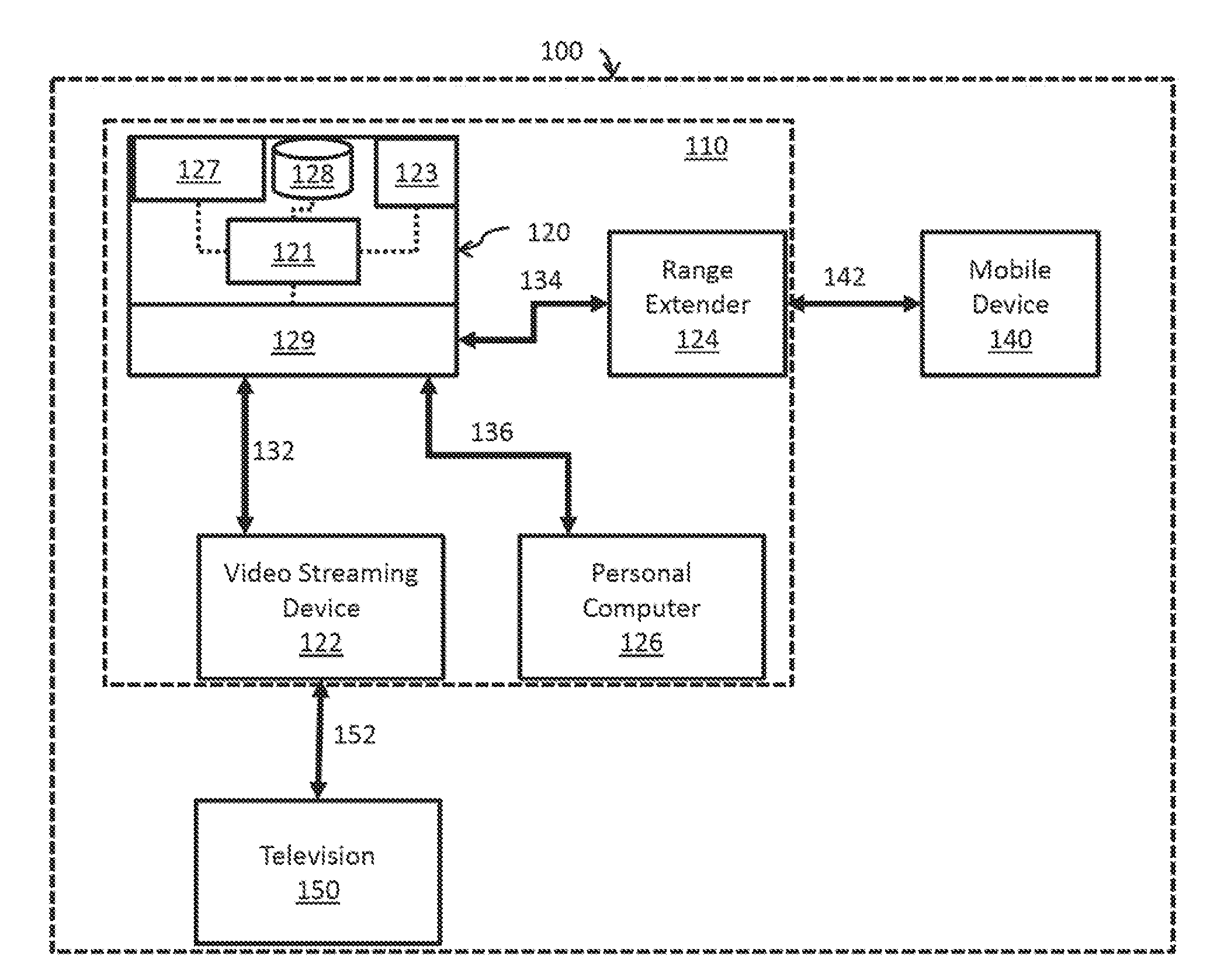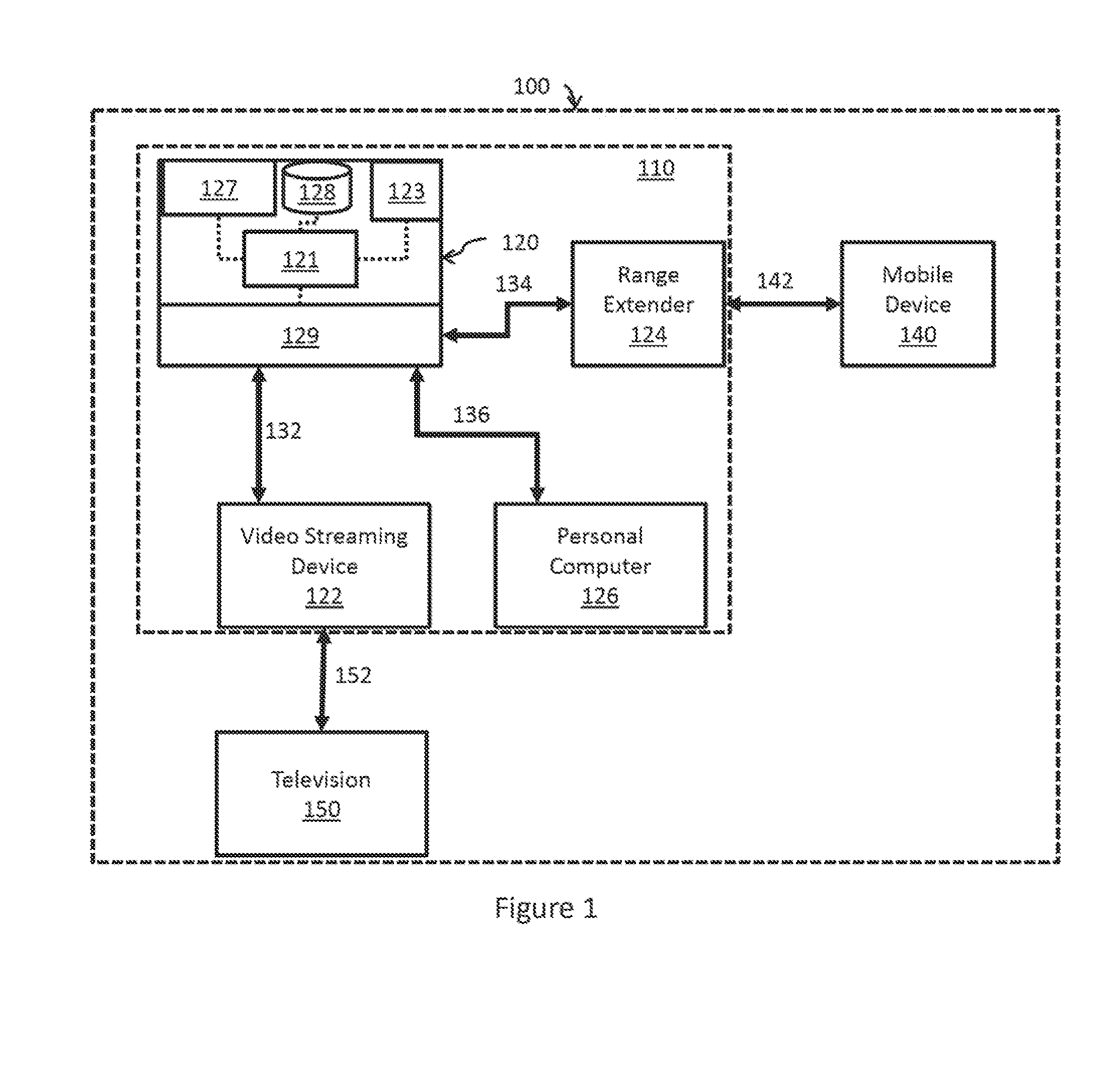Power back-off for limiting emissions and power consumption
a technology of power back-off and emission limitation, applied in the field of powerline communication, can solve the problems of increasing the transmission time required for transmitting a set amount of information, the cost of reducing transmission power, and the antenna used as an antenna that generates significant radio frequency (rf) emissions, so as to achieve the desired rate of communication. the effect of very low
- Summary
- Abstract
- Description
- Claims
- Application Information
AI Technical Summary
Benefits of technology
Problems solved by technology
Method used
Image
Examples
Embodiment Construction
)
[0019]FIG. 1 shows a block diagram illustrating a system 100 for communicating between powerline communication nodes. The system 100 includes elements traditionally found in a home environment, though the disclosed principles may be applied to powerline communication (PLC) networks deployed in a work place, automobile, or other environment having a powerline infrastructure. The system 100 may comprise an access point 120 that receives connectivity to an external, broader network (e.g., the internet) via a port 127. The connectivity to the external, broader network may be established via a wired connection or a wireless connection, which may use a cellular protocol such as a 2G, 3G, or 4G LTE protocol. The access point 120 may, for example, be an internet gateway router that may comprise a wireless transceiver 123 to provide wireless connectivity (e.g., WiFi) to local devices in addition to the PLC connectivity described below. The access point 120 may additionally or alternatively ...
PUM
 Login to View More
Login to View More Abstract
Description
Claims
Application Information
 Login to View More
Login to View More - R&D
- Intellectual Property
- Life Sciences
- Materials
- Tech Scout
- Unparalleled Data Quality
- Higher Quality Content
- 60% Fewer Hallucinations
Browse by: Latest US Patents, China's latest patents, Technical Efficacy Thesaurus, Application Domain, Technology Topic, Popular Technical Reports.
© 2025 PatSnap. All rights reserved.Legal|Privacy policy|Modern Slavery Act Transparency Statement|Sitemap|About US| Contact US: help@patsnap.com



